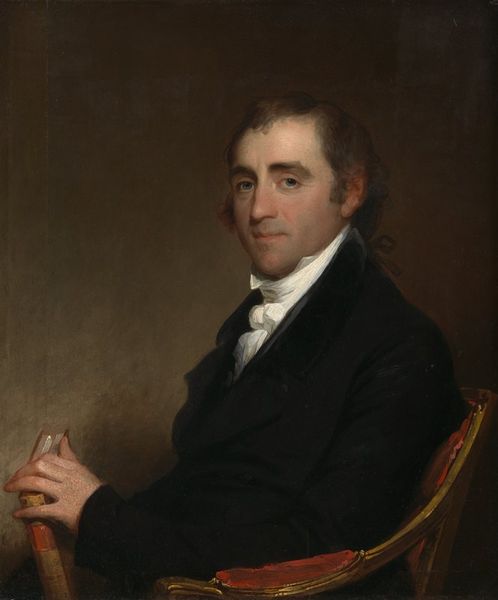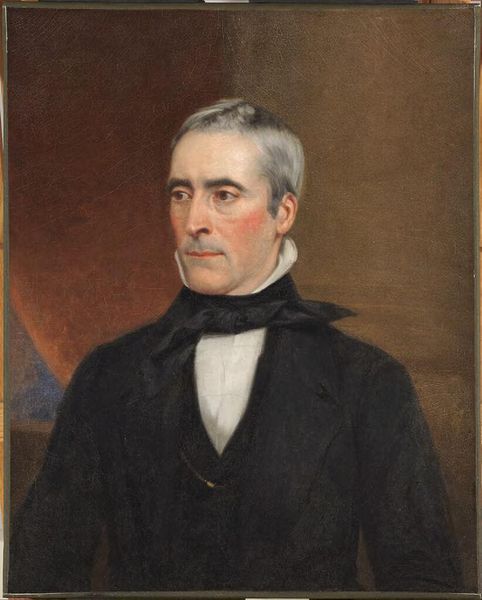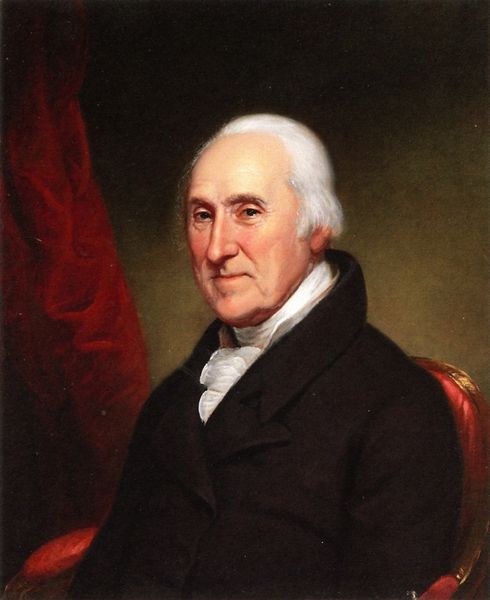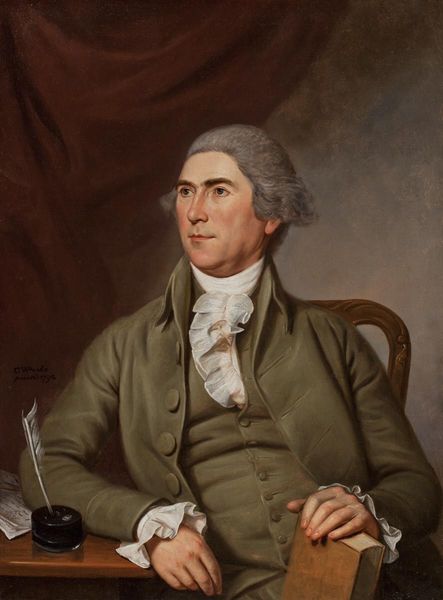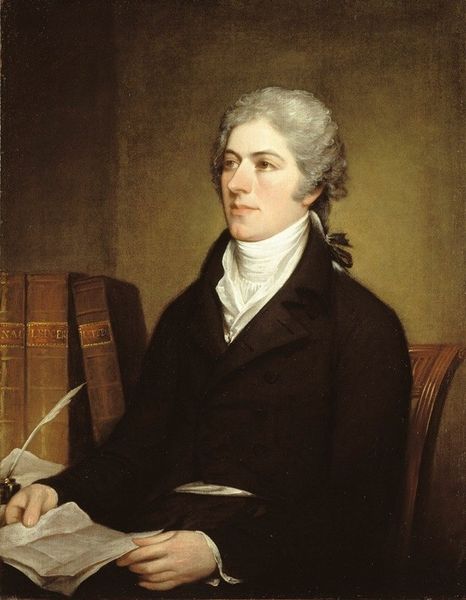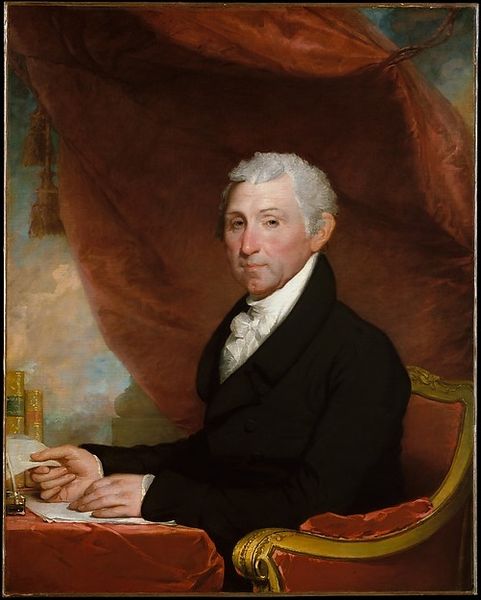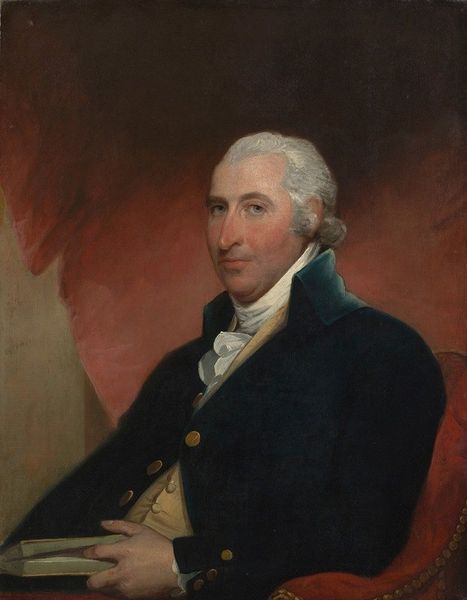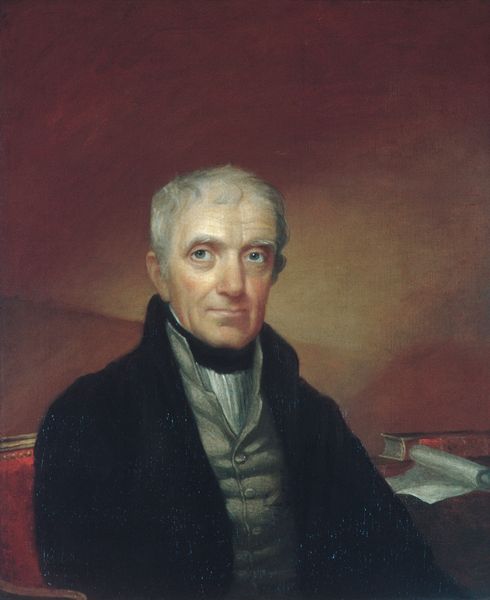
oil-paint
#
portrait
#
figurative
#
neoclacissism
#
portrait
#
oil-paint
#
portrait subject
#
portrait reference
#
portrait head and shoulder
#
portrait drawing
#
history-painting
#
facial portrait
#
academic-art
#
portrait art
#
miniature
#
fine art portrait
#
realism
#
celebrity portrait
#
digital portrait
Copyright: Public Domain: Artvee
Editor: Here we have Gilbert Stuart's oil on canvas portrait of Judge Daniel Cony of Maine, circa 1815. What strikes me is its reserved character; it feels very much about presenting an image of power and restraint. What do you see in this piece? Curator: For me, it’s impossible to separate this image from its historical and social context. Stuart was the portraitist of the elite. So, how does a portrait like this participate in the construction of power in early 19th-century America? How does it reflect and reinforce existing social hierarchies? Editor: Could you expand on that a little? I see the formal attire, and the books suggesting erudition. But is there something more subtle at play? Curator: Absolutely. Think about the way Cony is presented: his gaze, the control in his expression, his posture. This isn't just a likeness; it's a performance of authority, reinforcing who belongs in positions of power. Consider who *didn’t* get their portraits painted like this back then. Editor: So, by understanding who is represented and *how*, we get insight into social inequalities of that time? Curator: Precisely. Art becomes a powerful tool for both reflecting and perpetuating social dynamics. The image reinforces Cony's power as part of the political elite, whose status would be instantly recognizable to the painting's intended audience. The painting becomes an object that helps to consolidate Cony’s status in the newly formed state of Maine, even after his death. What do you make of that reading? Editor: It makes me reconsider the simple reading of it as a dignified portrait, seeing the nuances of its impact as a representation of its era. Thanks for broadening my perspective. Curator: My pleasure. Thinking critically about the cultural work these images perform is essential. We're not just looking at paintings; we're engaging with a visual history of power and privilege.
Comments
No comments
Be the first to comment and join the conversation on the ultimate creative platform.


